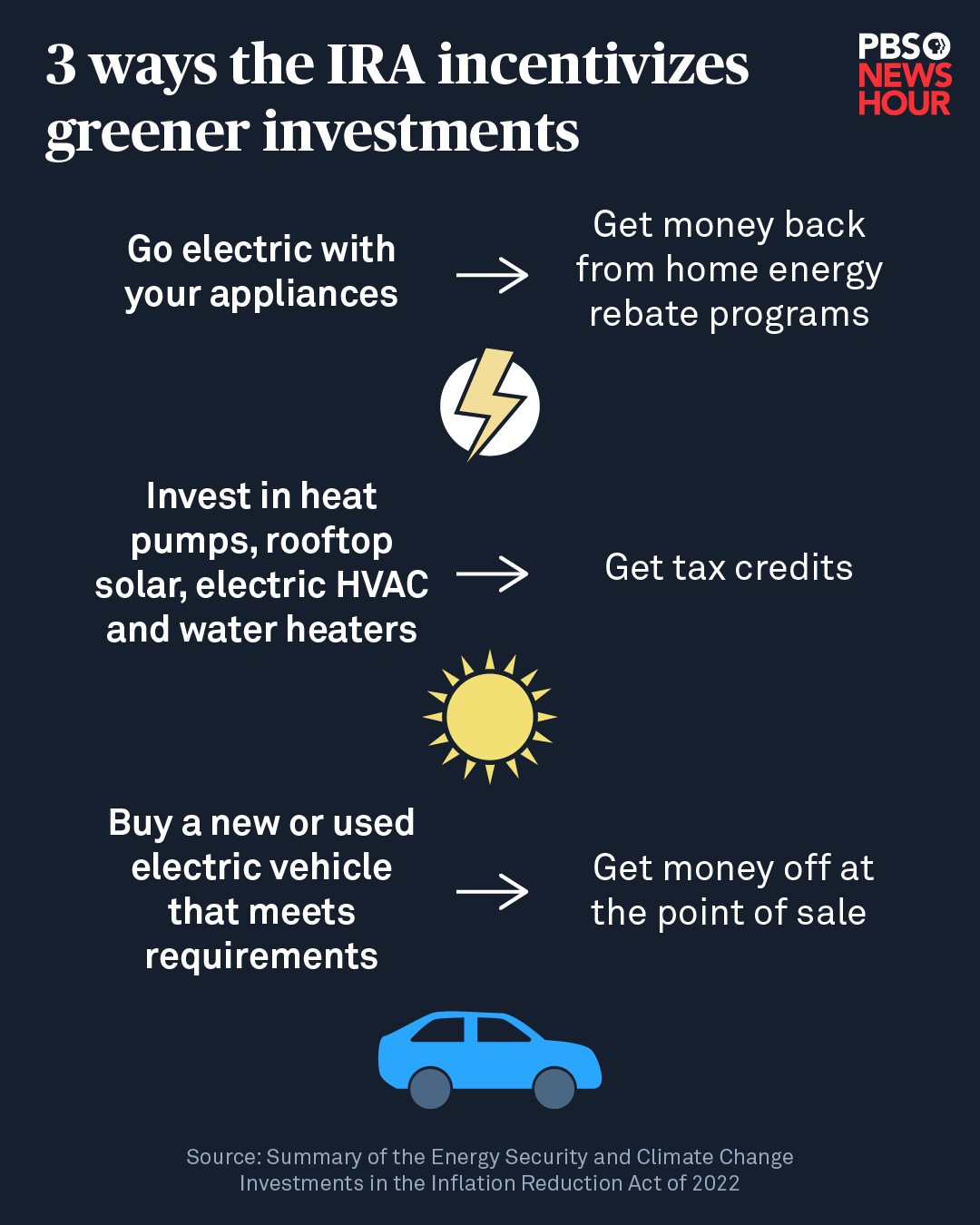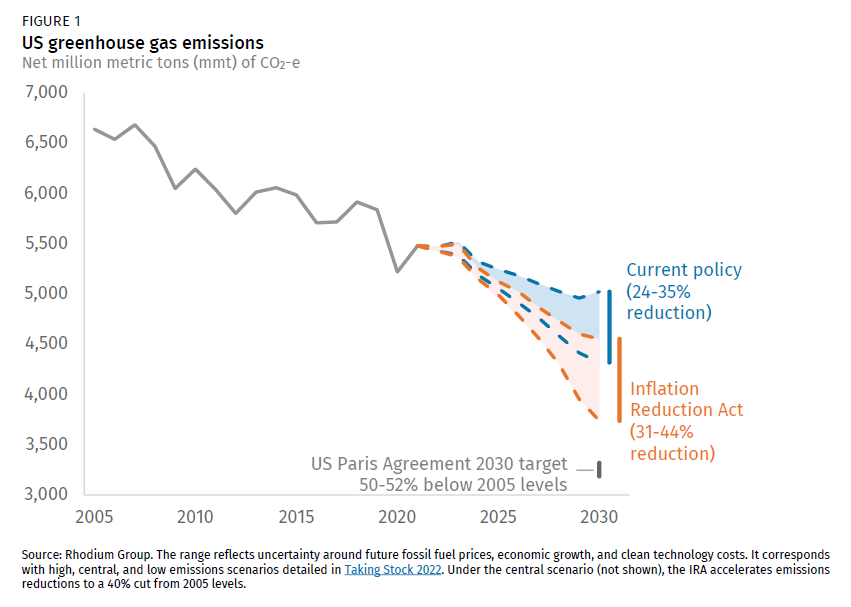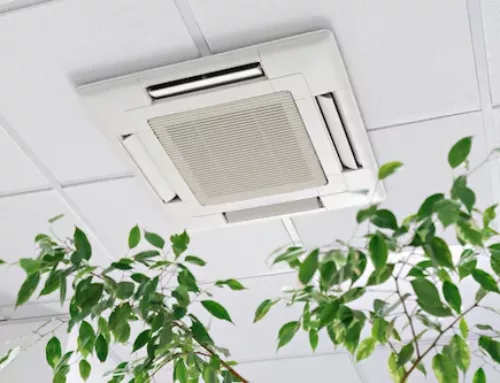

Graphic by: Protocol
The largest chunk of money is going to things like making renewable energy cheaper and incentivizing sourcing parts and materials from America. This will push more people to have a reason to switch from fossil fuels to renewables because more people will be able to afford it. Not only that, but sourcing parts and materials from America will create more jobs and, with wage requirements also set by the IRA, more people will have the disposable income to make that switch.
A lot of homes in the US currently rely on gas powered heating and cooking systems, and buying and installing their electric counterparts can be expensive. The Inflation Reduction Act sets aside money specifically to help homeowners with these expenses. This includes electric vehicle tax credits to incentivize people to make their next car purchase an electric one.




